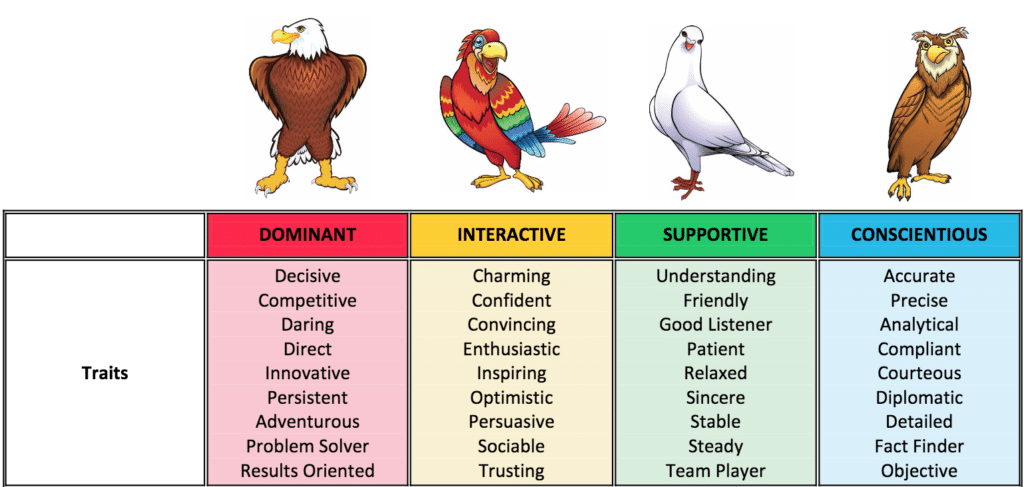What do Wonder Woman, lie detectors, and personality tests have in common?
The answer is Dr. William Moulton Marston, the mastermind behind all three. In our industry, we’re seeing the DISC assessment (a personality test based on Marston’s DISC model) make a big comeback.
For some, the idea of an industrial personality test as a workplace tool can create, at best, lukewarm feelings. In the past, industrial personality tests were once tools to weed out emotionally unstable workers and, by extent, a quick way to make snap judgements.
At ELM, however, we use tests like the DISC to help foster open communication and healthy company culture. By understanding what DISC and other personality tests can tell us about individual team members, we can better work with the entire spectrum of values, personalities, and moods in our midst.
The Negative Origins of Industrial Personality Tests
Industrial personality tests have a less-than-pleasant history, steeped in fear and rife with bias and bizarre assumptions, which explains the negative stigma still surrounding them. The earliest known personality test for workplace assessments was Woodworth’s Personal Data Sheet (WPDS) in 1925. It was adapted from a 1917 military questionnaire meant to eradicate potential soldiers with a “predisposition for shell shock” (what is now known as post-traumatic stress disorder (PTSD).
With loaded questions like “Do you get tired of people easily?” the WPDS and other early workplace personality tests were historically negative—meant to identify and weed out neurosis, rather than enlighten or educate users. The WPDS was soon discredited and disappeared, but the idea around testing soldiers—and by extension, workers—caught on.
DISC Personality Types
Just a few years after Woodworth’s test emerged, a new type of personality analysis began making the rounds and creating interest among the psychological and corporate spheres of influence.
The DISC theory was first introduced in a 1928 book called Emotions of Normal People by psychologist William Marston. Marston’s model divided “normal” (or typical) human emotional behavior into four DISC personality types:
(D) Dominance
(I) Inducement
(S) Submission
(C) Compliance
In this case, it’s almost impossible to separate the theory from the theorist, and Marston’s personal background gives us some key clues into why he was so interested in categorizing personalities via DISC. Marston himself lived what his era would have considered an atypical, scandalous private life, which might explain the deviant undertones of the words “dominance, inducement, submission, and compliance.” Perhaps his multifaceted approach to layered personality traits was self-reflective, as he was an attorney, psychologist, an outspoken proponent of women’s rights by day and, surprisingly, a comic book author by night.
Marston created the comic book character “Wonder Woman,” (an Amazonian from an island where no men are allowed). Marston was also famous for inventing the first lie detector test but, interestingly enough, lied to the public about being a polygamist. One of his wives was a former student, but he told the public she was a relative staying with himself and his first wife. He fathered children with both women and they all lived together in a triad. Marston, in spite of the scandal of his private life, was a well-respected psychologist whose theories of human behavior are still widely accepted today. Still, his DISC test wouldn’t make its debut on a professional level until years after Marston developed it.
The DISC model was eventually published as a psychological test in 1956 by industrial psychologist Walter V. Clarke as a way of vetting potential job candidates. Clarke renamed the four types as: Aggressive, Sociable, Stable, and Avoidant. ASSA just doesn’t have the same ring to it, does it?
Not only did Clarke destroy the previously catchy acronym, but his four types were skewed: two were being messaged as negative and two were being messaged as positive. By making judgments on “good” and “bad” personality traits, it encouraged potential employees to manipulate their test results to appear to be the perfect candidate.
As for the most current use of the DISC acronym, the descriptors are still there—Dominant, Interactive, Supportive, Conscientious—but, in the spirit of inclusivity, all are positive. There is no “wrong” personality, so you can’t answer incorrectly. The test exists to learn more about how you communicate and how others can best communicate with you, as opposed to trying to weed out potential employees with “undesirable” personality traits.
Co-founder and CEO of Take Flight Learning, Merrick Rosenberg, also added the bird imagery to explain each personality type in a visual way (see chart below).

Taking Flight at ELM: How our Organization Uses the DISC Assessment
We know that the age-old mistrust between worker and employee has definitely not been helped by corporate misuse of personality tests. The stigma around these tests still exists today in some organizations, which is why they don’t work as well without a preexisting culture of trust and transparency. Workers might skew their answers based on what they think management wants, or management could use the results as justification to not hire, demote, or fire certain employees
We’ve recently rolled out the DISC across our entire organization as part of an ongoing growth and development tool to build a greater understanding in communicating more effectively across the whole company. Our leaders have been certified through the Take Flight Learning company to give the DISC Assessment and analyze the results. Not surprisingly, this has resulted in an awareness of an abundance of Supportive/Doves at ELM. But, not everybody is the same or has an identical mixture of attributes, so the DISC is a great teaching tool for developing awareness and an appreciation/understanding of unique communication styles.
Merrick Rosenberg, CEO of Take Flight Learning and author of The Chameleon: Life-Changing Wisdom for Anyone Who Has a Personality or Knows Someone Who Does has changed the way people learn about themselves and utilize the styles to impact their organizations. “For far too long, personality assessments have created fleeting fascination, but generated no long-term impact,” he said. “If done well, the styles will become embedded into a company’s culture and change the way people interact with their coworkers and customers.”
While the verbiage surrounding the DISC theory has changed, the test is based on the same structure and research that arose in the 1930s. Some of the earlier tests have fallen out of fashion, but the tests we still use, like the DISC-model test, have adapted with the times. When deployed empathetically and intelligently, personality tests, once a negative tool for hierarchical organizations to weed out undesirables, can be used as positive tools for finding out more about ourselves, the people we work with, and how we can communicate more effectively.






